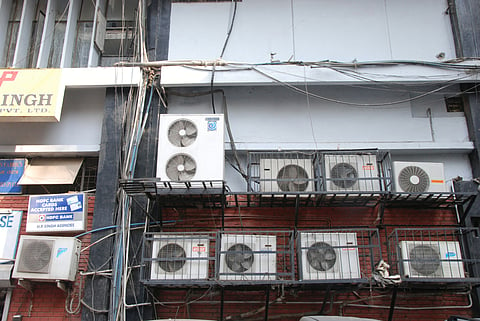

Cooling — once seen as a luxury — is now a lifeline. But as global temperatures rise and cities swelter under record heatwaves, the world’s growing demand for air conditioning could itself become a major driver of climate change unless cooling systems are redesigned to be sustainable, inclusive, and low-carbon, warns a new UN report released on November 11 at the 30th Conference of the Parties (COP30) to the United Nations Framework Convention on Climate Change in Belém, Brazil.
Global Cooling Watch 2025, published by the UN Environment Programme’s (UNEP) Cool Coalition, finds that global cooling demand is set to triple by 2050, threatening to double related emissions to 7.2 billion tonnes of CO2 equivalent — unless countries act now to deliver cleaner, smarter, and more equitable cooling access.
“As deadly heatwaves become more frequent and severe, access to cooling must be treated as essential infrastructure — alongside water, energy, and sanitation,” said Inger Andersen, Executive Director of UNEP. “But we cannot air-condition our way out of the heat crisis. Passive, energy-efficient and nature-based solutions can help keep people, food systems, and economies safe.”
The report outlines a Sustainable Cooling Pathway that could cut emissions by 64 per cent and save $43 trillion in avoided electricity and grid investments through 2050. When paired with rapid power-sector decarbonisation, cooling-related emissions could fall by 97 per cent, nearing net-zero by mid-century.
The pathway combines:
· Passive cooling measures such as shading, ventilation, reflective surfaces, and green urban spaces.
· Low-energy and hybrid systems that pair fans with efficient air conditioners.
· High-efficiency equipment and a faster phase-down of HFC refrigerants under the Kigali Amendment.
Together, these measures could extend safe cooling access to three billion additional people, particularly in the Global South, while easing pressure on overstressed electricity grids.
Over one billion people currently lack adequate access to cooling, a figure that could triple by 2050 without intervention. Vulnerability is highest among women, smallholder farmers, and elderly populations, especially in Africa and South Asia.
The report finds that passive and low-energy cooling solutions deliver the biggest and fastest comfort gains at the lowest cost, reducing indoor temperatures by up to 8°C and cutting household energy use by 30 per cent or more.
“For Somali cities, sustainable cooling is not a luxury — it’s a lifeline,” said Bashir Mohamed Jama, Somalia’s Minister for Environment and Climate Change. “By joining the ‘Beat the Heat’ initiative, we aim to protect lives and livelihoods from rising temperatures while advancing our climate goals.”
At COP30, UNEP and the Brazil Presidency launched the ‘Beat the Heat’ implementation drive, a global coalition of 187 cities — from Rio de Janeiro to Jakarta to Nairobi — working to localise the Global Cooling Pledge and bridge gaps in finance, governance, and delivery of heat resilience.
So far, 72 countries have signed the Global Cooling Pledge to cut sectoral emissions by 68 per cent by 2050, though only 54 have comprehensive policies aligned with the Sustainable Cooling Pathway.
“Fortaleza is putting nature at the heart of climate adaptation,” said Evandro Leitão, the city’s mayor. “Green corridors and microparks are not just cooling spaces — they are about equity, health, and livability.”
The report calls for governments to treat heat protection and cooling as public goods, integrated into urban planning, housing, health, and education infrastructure. It urges countries to embed cooling in Nationally Determined Contributions (NDCs), National Adaptation Plans (NAPs), and building codes, and to empower local authorities to drive passive urban design — trees, water bodies, and reflective materials — that can lower city temperatures by up to 25 per cent.
Singapore’s Minister for Sustainability and the Environment, Grace Fu, said her country is sharing its digital climate modelling tools to help cities “predict, plan, and cool smarter.”
UNEP’s Andersen said the challenge now is to move from emergency response to long-term planning.
“We can’t keep treating heatwaves as isolated disasters. They are chronic, predictable risks — and cooling must be built into our cities, economies, and health systems,” she said.
As COP30’s ‘Mutirão Contra o Calor Extremo’ — or “Collective Effort Against Extreme Heat” — gains traction, the message from Belém is clear: cooling must evolve from a climate problem into a climate solution.